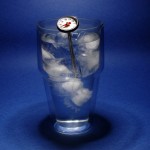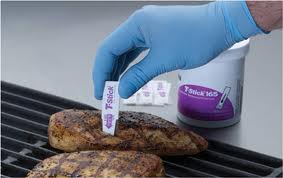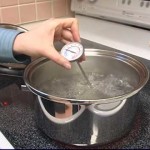Temperature Control and Food Safety Certification MN
In order to obtain Food Safety Certification in MN, one essential key is to understand how to control the temperature of cooked foods, and the proper cooking temperatures for raw foods. Grasping these concepts is not only necessary in order to gain your food manager certification, but also to prevent food borne illness and ensure quality.
Proper Temperature Checking Technique
Simply inserting your probe thermometer into a cooked meat item will not always give you an accurate temperature result. There are certain things that you should be aware of to ensure proper control when checking the temperature of prepared food items.
• For beef, lamb and pork roasts, temperature must be checked in the thickest portion
• Avoid contact between your probe thermometer and any bones
• Chicken should be checked on the thickest section of the breast
• It is recommended that thin food be checked with a thermocouple style thermometer
• Hot and cold soups, sauces and other liquids should be stirred before checking
Calibrating Your Probe Thermometer
No matter how often you check the temperature of your temperature controlled items, you will not receive accurate results if you are using a probe thermometer that is not properly calibrated. Health inspectors will calibrate their thermometers before every inspection, and food workers should take care to calibrate their’s often. Thermometers should be calibrated before their first use, after they have been dropped or after they have gone from one temperature extreme to the other. There are two methods to properly calibrate a probe thermometer.
Boiling method
• Bring water to a boil
• Once you water has reached a boil, insert your thermometer
• Your thermometer should be adjusted to read 212 degrees Fahrenheit

Ice water method
Ice-water method
• Fill a container with crushed ice and then add water
• Wait five minutes in order for your ice-water’s temperature to stabilize
• Insert your thermometer into the center of your ice-water, making sure the probe does not touch the side or bottom of your container
• Your probe should be adjusted to read 32 degrees Fahrenheit
The ice-water method is the safest and most accurate method. These tips and other temperature control information are necessary to understand, and should be covered in depth during your Food Safety Certification MN training.





